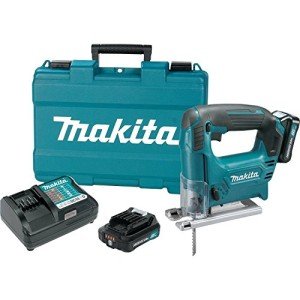miter-saw0128
miter-saw0128
The 9 Things Your Parents Teach You About Hand Mitre Saw

Everything You Need to Know About Hand Mitre Saws
A hand mitre saw, often referred to merely as a mitre saw, is an essential tool in woodworking and building and construction. This tool permits users to make exact angled cuts in wood and other materials, making it vital for projects such as framing, crown molding, and image frames. This post dives into the different elements of hand mitre saws, exploring their features, utilizes, and essential info for anyone considering this important tool.

What Is a Hand Mitre Saw?
A hand mitre saw is a manual cutting tool that consists of a saw blade, a handle for grasping, and a wooden or plastic base that permits the user to secure the material being cut. The blade is installed vertically and can be changed to different angles, allowing users to make straight or angled cuts with precision.
Key Features
| Function | Description |
|---|---|
| Blade Type | Typically has a fine-toothed saw blade for smooth cuts. |
| Angle Adjustment | Commonly features a pivoting head or a sliding system that permits for various angle settings (typically in 15-degree increments). |
| Material Compatibility | Ideal for softwood, wood, and often even plastic and soft metal. |
| Mobility | Light-weight and easy to transport, making it ideal for on-site work. |
Advantages of Using a Hand Mitre Saw
Utilizing a hand mitre saw has numerous benefits, particularly for those who delight in DIY tasks or Professional Mitre Saw woodworking. Here are a few of the most significant benefits:
- Precision Cuts: The primary benefit of a hand mitre saw is the capability to make accurate angled cuts, which is important for fitting joints in numerous applications.
- Price: Compared to power mitre saws, hand mitre saws are affordable and available for hobbyists and professionals alike.
- Portability: Lightweight and simple to bring, making them perfect for job sites without access to electrical power.
- Alleviate of Use: Hand mitre saws are uncomplicated to utilize, with minimal setup required.
- Wide Variety of Applications: They can be made use of for a range of products and tasks, including molding, trim work, and furniture building.
Choosing the Right Hand Mitre Saw
When selecting a hand mitre saw, consider the list below aspects:
| Factor | Description |
|---|---|
| Blade Length | Common lengths vary from 10 to 14 inches; select based upon the size of the material being cut. |
| Angle Settings | Look for a model with preset angles for common cuts (0 °, 45 °, etc) for much better convenience. |
| Product Build | Make sure that the saw is developed with durable products. Metal frames tend to use better longevity than plastic ones. |
| Cost | Identify your spending plan, but be prepared to buy a quality tool for much better performance and toughness. |
Popular Brands
Some well-known brand names in the market for hand mitre saws include:
- Stanley
- Irwin
- DeWalt (for premium choices)
- Bosch (for flexible saws)
- Milwaukee
Correct Use and Maintenance
To attain the best outcomes with a hand Mitre Saw Offers saw and to lengthen its lifespan, proper usage and upkeep are important. Here are some ideas:
Proper Use
- Protect the Workpiece: Always make sure that the product to be cut is securely secured to prevent motion.
- Align the Cut: Before cutting, double-check that the angle of the blade is set properly and lined up with the designated cut line.
- Usage Steady Pressure: Apply even pressure while sawing to avoid binding the blade.
- Wear Safety Gear: Safety goggles and gloves are suggested to secure versus wood splinters and particles.
Maintenance Tips
- Tidy After Use: Wipe the blade and base with a clean fabric after each usage to get rid of any dust or resin buildup.
- Sharpness Check: Regularly check the saw blade for sharpness; dull blades should be honed or replaced.
- Rust Prevention: Apply a light coat of oil on metal parts to prevent rusting.
- Storage: Store in a dry location, ideally hanging or in a protective case to avoid damage.
FREQUENTLY ASKED QUESTION
Q: Can I use a hand mitre saw on products other than wood?A: Yes, some hand mitre saws can cut plastic or soft metals, however constantly check the manufacturer’s requirements before use.
Q: How accurate are the cuts with a hand mitre saw?A: Hand Small Mitre Saw saws can make extremely precise cuts when utilized correctly, with an accuracy of as much as 1/32 of an inch in ideal conditions.
Q: How does a hand mitre saw differ from a power mitre saw?A: While both serve similar purposes, a hand Mitre Compound Saw saw is manually run and typically more portable, whereas a power mitre saw is electrically powered and developed for quicker, repeated cuts.
Q: What is the most typical angle setting used in hand mitre saws?A: The most typical angle setting is normally 45 degrees for miter joints, but many mitre saws enable a broader variety of modifications.
Hand mitre saws are vital tools for anyone associated with woodworking or craft jobs requiring precision cuts. Their price, mobility, and ease of use make them a popular option amongst DIY enthusiasts and professionals alike. By comprehending their functions and abilities, selecting the ideal model, and practicing appropriate use and upkeep, users can make the most of the benefits of these flexible tools while achieving results that enhance their woodworking tasks. Whether one is cutting molding for a home restoration or crafting customized furniture, a hand mitre saw can be an essential addition to one’s toolkit.

